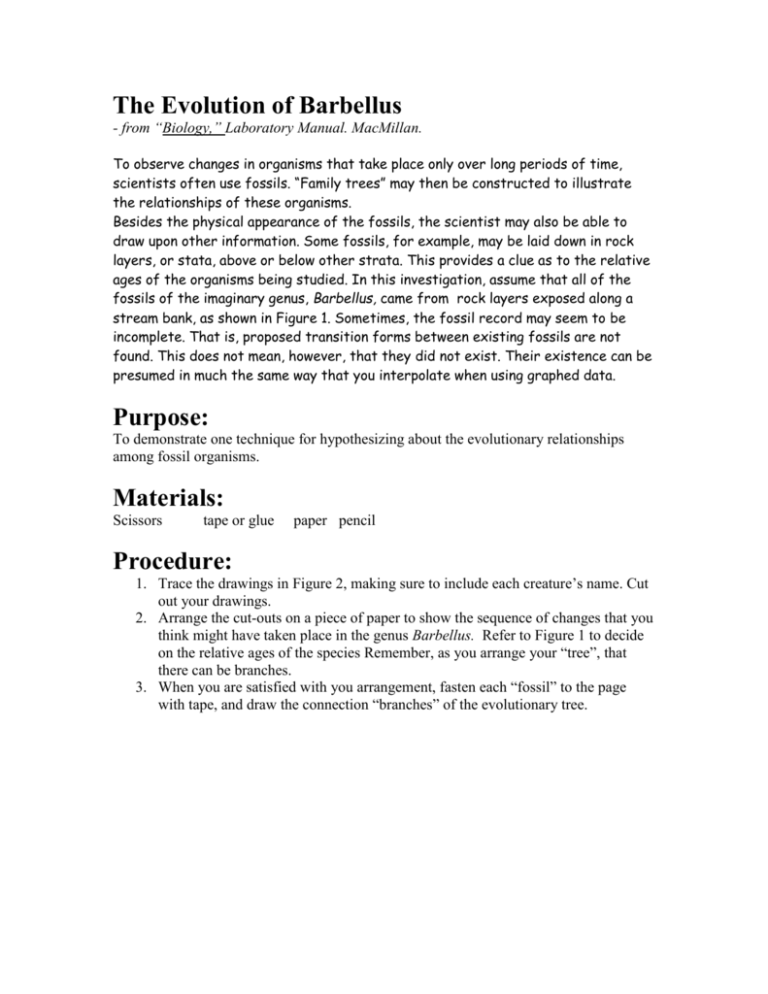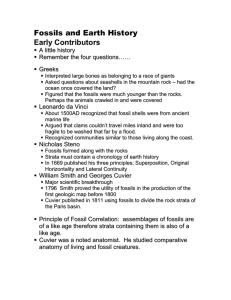The Evolution of Barbellus Lab
advertisement

The Evolution of Barbellus - from “Biology,” Laboratory Manual. MacMillan. To observe changes in organisms that take place only over long periods of time, scientists often use fossils. “Family trees” may then be constructed to illustrate the relationships of these organisms. Besides the physical appearance of the fossils, the scientist may also be able to draw upon other information. Some fossils, for example, may be laid down in rock layers, or stata, above or below other strata. This provides a clue as to the relative ages of the organisms being studied. In this investigation, assume that all of the fossils of the imaginary genus, Barbellus, came from rock layers exposed along a stream bank, as shown in Figure 1. Sometimes, the fossil record may seem to be incomplete. That is, proposed transition forms between existing fossils are not found. This does not mean, however, that they did not exist. Their existence can be presumed in much the same way that you interpolate when using graphed data. Purpose: To demonstrate one technique for hypothesizing about the evolutionary relationships among fossil organisms. Materials: Scissors tape or glue paper pencil Procedure: 1. Trace the drawings in Figure 2, making sure to include each creature’s name. Cut out your drawings. 2. Arrange the cut-outs on a piece of paper to show the sequence of changes that you think might have taken place in the genus Barbellus. Refer to Figure 1 to decide on the relative ages of the species Remember, as you arrange your “tree”, that there can be branches. 3. When you are satisfied with you arrangement, fasten each “fossil” to the page with tape, and draw the connection “branches” of the evolutionary tree. Figure 1: rock layers containing fossils of Barbellus. Discussion Questions: 1. Relative Age of Fossils. a. Which fossils are the oldest? b. Which fossils are the youngest? c. Outline the evidence that you used to to answer (a) and (b). 2. Describe the relationship between the members of your “family tree” for the genus Barbellus and the information concerning the strata in which each member was found. 3. Are there any transition forms suggested by your “tree” that were not accounted for in the fossils found? Describe the transition forms that are suggested by your “family tree”. 4. Describe the relationship between the complexity and the age of members of the genus Barbellus. 5. Write a short natural history of the evolution of the Genus Barbellus, citing reasons for the adaptive radiation shown by your “tree”. Figure 2: Species of Barbellus (there are 10!)







